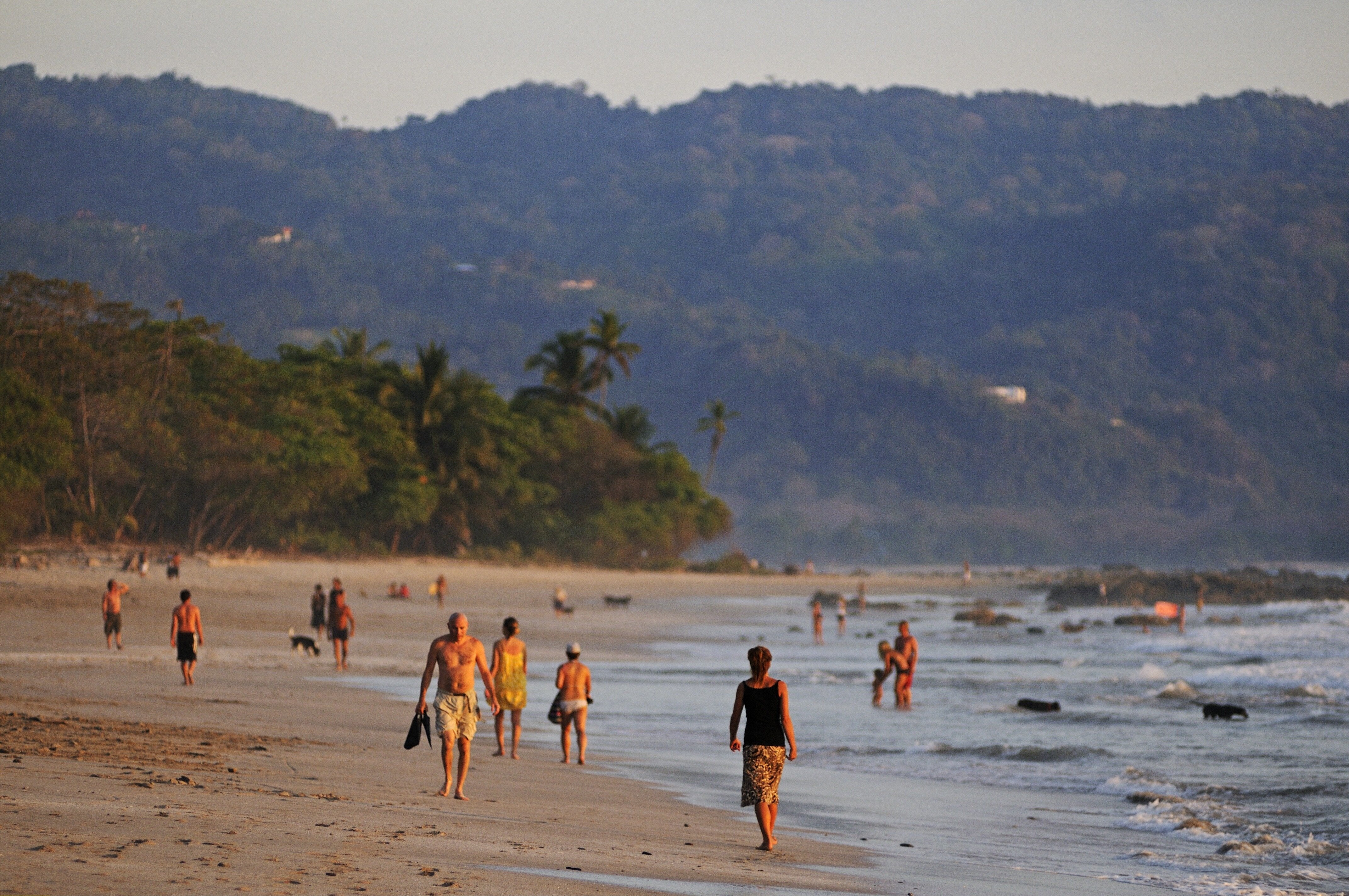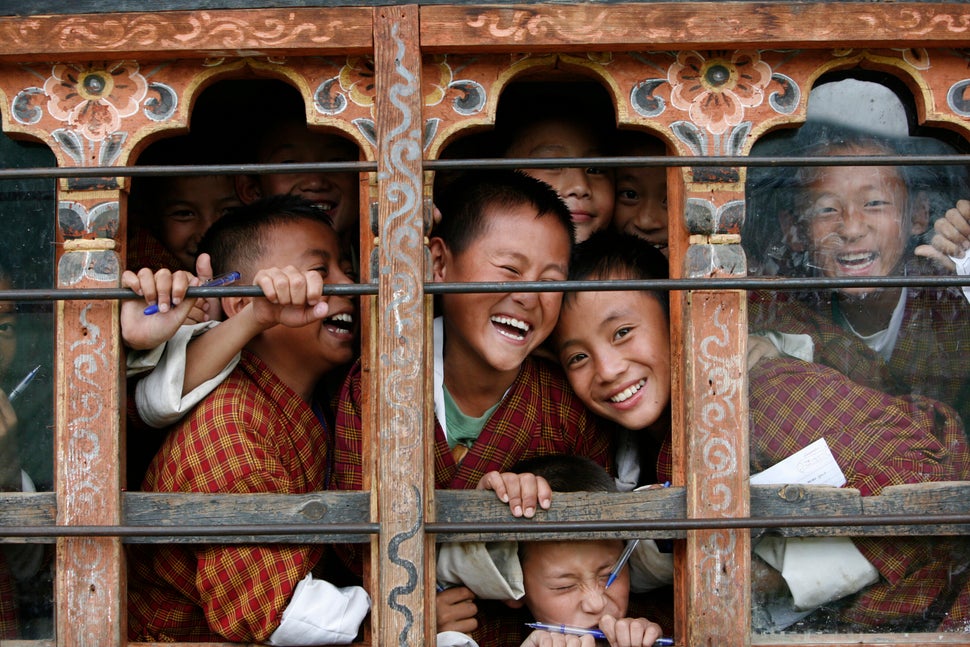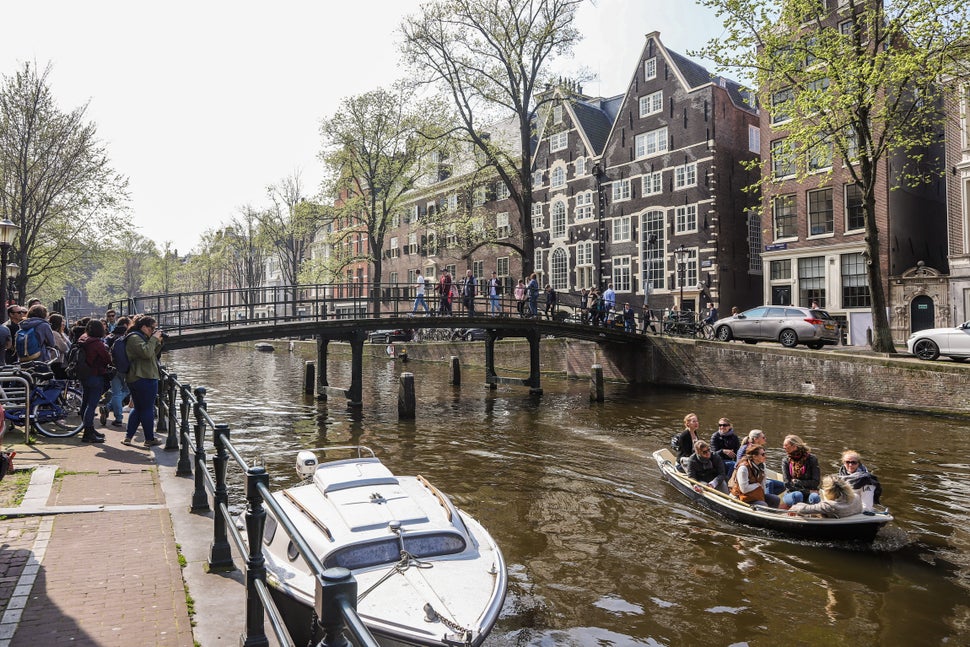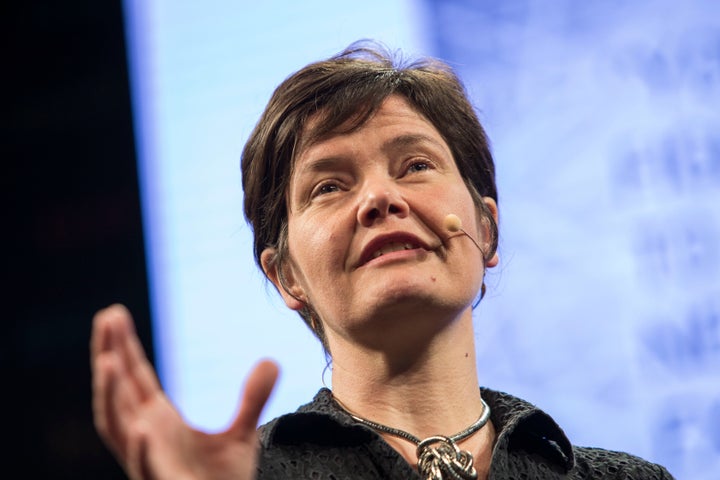FutureProof is a collaboration between HuffPost and Unearthed, Greenpeace UK’s journalism unit
With its rugged mountain landscape, thick rainforest and sweeping, isolated Pacific beaches, Nicoya Peninsula is one of the more beautiful places in the world to live. But there is another benefit to residing in this picturesque chunk of northwestern Costa Rica: The people here, especially men, live some of the longest lives in the world.
Nicoyan men have a life expectancy of nearly 84 years, rivaling even the life expectancy in Japan, a country famed for its long-living citizens.
Curiously, this marker of human resilience has been achieved in a region that is not rich, where most people survive on traditional subsistence farming. Researchers digging into the reasons for Nicoyans’ longevity have pointed to the value of strong social bonds and a deep sense of community.
“In Nicoya, the pace of life is different, it’s not a materialistic society,” said Mariano Rojas, a happiness expert from Costa Rica who is an economics professor at the International University of La Rioja in Spain. “But it’s not only Nicoya. High happiness is everywhere in the country.”

For those who believe that money equals happiness, Costa Rica is a paradox.
The small Central American nation is not rich. The middle-income country has only one-fifth of the wealth of the U.S. per capita, but it outperforms its giant North American neighbor on many well-being indicators ― not just life expectancy. It ranked several places above the U.S. in the United Nations’ 2020 World Happiness Survey, which scores countries by how happy their citizens perceive themselves to be.
Costa Rica spends a higher proportion of its gross domestic product on education than almost any other country: 8% compared to 5% in the U.S. The country’s best university is public and funded by the government. And it manages all this with a per-capita environmental footprint one-third the size of that of the U.S.
In fact, Costa Rica achieves the highest levels of happiness with the lowest ecological footprint, according to the Happy Planet Index, which measures sustainable well-being across the world.
Government investment in health, education and affordable housing is a big part of Costa Rica’s success, Rojas said. The country has the funds for such investments thanks to a radical decision it made in 1948 to dismantle its army, rerouting the budget into public services.
Costa Rica is certainly not perfect ― it still has relatively high levels of poverty and income inequality ― but the country shows what can be achieved when an economy is set up around the idea of improving people’s lives rather than the pursuit of endless growth. It pokes huge holes in the conventional wisdom that GDP ― a broad, crude measure of economic success ― is the only metric that counts.
It’s a lesson some economists are hoping the world heeds as countries embark upon the monumental challenge of rebounding from our current pandemic-related economic meltdown. It’s a chance to rethink who economies are for and how to rebuild them; to give people meaningful lives and take us off the path of climate destruction.
The idea for GDP came about at a time not unlike this present moment. Economist Simon Kuznets devised the metric in the 1930s ― a period characterized by soaring unemployment and deep inequality ― to help measure countries’ progress in recovering from the Great Depression. GDP counts the value of goods and services exchanged within a country.
“Since the Second World War, pretty much every country has looked at GDP to track its development,” said Diane Coyle, who co-directs the Bennett Institute for Public Policy at the University of Cambridge. GDP became a synonym for a country’s success.
But even Kuznets knew it was an imperfect measure, one that misses hugely important areas of the economy, such as unpaid work like looking after children, volunteering and factors like personal well-being. Nor does it account for how the wealth and benefits of a nation’s economy are shared among its people, he acknowledged.
Focusing on GDP, said Coyle, also ignores a country’s natural resources: forests that support wildlife and absorb carbon dioxide, the waterways that run through them and the minerals deposited underneath. As a result, she said, “it has been possible to ignore the costs of climate change” while tallying ever-higher reaches of GDP.

It’s a model of economic success ill-equipped to withstand the impact of crises: pandemics, natural disasters, recessions or all three, said Jason Hickel, an economic anthropologist and senior lecturer at Goldsmiths, University of London.
In fact, he said, the growth obsession “is precisely what got us into this mess in the first place.” Cycles of extraction, production and consumption to feed economies hooked on growth have increased emissions and destroyed nature, exacerbating the climate crisis and increasing the likelihood of more pandemics. It’s a threat to our health, food and water security ― and to our economic stability.
Yet as COVID-19 decimates economies across the world, scientists and economists who have warned about the dangers of pursuing endless economic growth are looking on in alarm at international reactions to the pandemic.
In a frantic effort to restart GDP growth, some countries are using the moment to boost sectors that are harmful to the environment. In March alone, China gave the green light for more new coal-fired power plants than it did in all of 2019. In June, U.S. President Donald Trump declared an economic emergency and signed an executive order directing agencies to waive environmental laws to speed up federal approvals for new mines, highways and other projects. Similarly, large American oil and gas companies have lobbied their way into the aid package meant to stimulate the economy to win tax cuts, including a reduction of the royalties due to taxpayers for oil and gas extracted from public lands and waters.
Emissions, which saw an unprecedented decline during the early lockdowns, have shot back up.
“The world’s governments are approaching this crisis as though the fall in GDP is [the] problem,” Hickel said. “[But] the real problem is that many people are losing their livelihoods ... and cannot afford to access the resources they need like health care, education, housing.” Governments need to rebuild, said Hickel, but in a different way.
Past a certain point that high-income nations have long exceeded, the relationship between GDP and social indicators like health, life expectancy, happiness, well-being, education, employment and wages “completely breaks down,” Hickel said. Instead of GDP growth, he said, what matters is how income and resources are distributed.
Some governments are already thinking about this and trying to formulate what makes for meaningful lives, said Coyle. She believes this trend is set to accelerate. “The ground is shifting and the pandemic will really push this faster. We’re all now asking about resilience … and want to understand peoples’ own definitions of what makes them well off,” she said.
The Kingdom of Bhutan, a tiny country nestled in the Himalayas, is the pioneer of prioritizing people’s happiness over GDP.
The definition of happiness can be nebulous, but Bhutan has developed its own metric: “Gross National Happiness,” conceived in the early 1970s by the current king’s father. GNH measures nine core principles, including health, education, environment, living standards, and governance — and also a few things that don’t fall in those typical buckets: psychological well-being, work-life balance, community vitality and cultural diversity.
GNH is based on the belief that “the ultimate desire of every citizen is to maximize happiness, therefore, the purpose of development must be to create enabling conditions for happiness,” explained Thinley Namgyel, the secretary of the country’s GNH Commission.

All the decades of happiness investment are paying off. Bhutan has significantly improved socioeconomic indicators in health and education, even while growing its GDP per capita. For instance, life expectancy has more than doubled, from 32.4 years in 1960 to 70.2 years in 2017, while the maternal mortality ratio dropped nearly 90% in under four decades.
All the while, the government has maintained its early emphasis on the environment: Bhutan is the only carbon-negative country in the world and has pledged to remain carbon-neutral. It’s on track to graduate from the U.N.’s Least Developed Countries category in late 2023, meaning it will no longer be among the poorest countries in the world.
While global travel restrictions due to the COVID-19 pandemic have dealt a severe blow to the country’s tourism sector, an important driver for its economy, the Bhutanese government has responded by providing allowances or alternate jobs for those affected, said Namgyel.
Bhutan is making efforts to keep people “engaged in some activity with monetary returns – even if the activity is to flatten a mountain – since psychological well-being of an individual is very important to enhance happiness,” Namgyel said.
The idea of governments focusing on what gives people’s lives meaning is slowly creeping into the mainstream for higher-income countries, too.
In 2018, Jacinda Ardern, New Zealand’s prime minister, stood before the United Nations and made a plea for kinder politics. She promised that her country would be “a kind and equitable nation where children thrive and success is measured not only by the nation’s GDP but by better lives lived by its people.”
To make good on this pledge, Ardern’s government did something “groundbreaking,” said Hickel. In December 2019, New Zealand announced it would be the first developed country in the world to introduce a “well-being budget” ― where the country’s success would be measured by people’s well-being. Not all New Zealanders had shared in the country’s economic growth, said Finance Minister Grant Robertson, and the aim was to tackle that.

Budget priorities include supporting New Zealand’s transition to a low-emissions economy, tackling domestic violence, reducing child poverty and improving child well-being, and promoting better health outcomes for all New Zealanders. In the midst of the pandemic, the 2020 budget includes funding boosts for family and domestic violence services and programs to combat social isolation among people in rural areas.
While it’s still early, the country has already recorded a drop in child poverty by most metrics, said Martin Berka, head of the School of Economics and Finance at Massey University in New Zealand. And as Ardern just celebrated a landslide electoral victory that saw her party win a much stronger mandate for the next three years, it’s reasonable to expect the pace of implementation will increase, he said.
Many of the policies that New Zealand has introduced are not “particularly innovative,” Berka argued, saying the country is introducing well-honed solutions already in place in some Western European nations, such as income redistribution and higher taxes for top earners.
What is innovative is New Zealand’s commitment to spending on social welfare, health, and a greener economy, rather than focusing on traditional measures of growth.
In Amsterdam, the road to post-pandemic economic recovery looks like a doughnut. Since April, municipal officials in the Dutch city have been working with British economist Kate Raworth, whose theory of “doughnut economics” (set out in a bestselling 2017 book of the same name) is intended as a guide to show how economies can meet people’s needs without causing irreparable damage to climate and nature.
As Raworth’s theory goes, the inner ring of the doughnut represents the minimum that people require to lead a good life, including food, clean water, housing, education, health care, gender equality, income and political freedom.
Those who don’t have these basics occupy the middle hole. The outer ring represents the ecological boundaries that humans cannot breach without damaging the planet. The goal: a society of people happily coexisting in the dough in between.

Raworth’s theory is helping government officials in Amsterdam understand where residents’ basic needs are not being met and then to consider how to address those needs without exacerbating climate stress. “It is not just a [hippie] way at looking at the world,” Amsterdam’s deputy mayor Marieke van Doorninck told the Guardian; it’s being used to address big challenges in the city.
For instance, to increase affordable housing without adding to Amsterdam’s climate footprint, the city plans to regulate new housing construction to maximize the use of recycled materials. The doughnut model forces the government to look at other hard truths, too, said van Doorninck, like whether the chocolate it receives at its ports ― the Netherlands is the world’s largest cocoa bean importer ― was produced with child labor or resulted in vast swaths of forest being razed.
These are just two pieces of Amsterdam’s future through the doughnut lens, and the hope is that following the model could help the city overcome the effects of the coronavirus crisis — meeting residents’ needs while working toward a goal to achieve “climate neutrality” by 2050.
“It might look strange that we are talking about the period after [COVID-19], but as a government, we have to … It is to help us to not fall back on easy mechanisms,” van Doorninck said.
At the moment, economies are set up to grow, said Raworth, whether or not that meets people’s needs and makes their lives better: “What we need are economies that make us thrive whether or not they grow.”

“It really is counter-productive to keep growing the way one is used to,” Coyle said, adding, “we need to pay more attention to the natural [environmental] cost.” Factoring the health of the environment into our economic calculations benefits individuals in their daily lives now, but also fortifies them against future threats.
Reducing emissions from cars and planes and factories leads to cleaner air while slowing global warming trends. Reining in industrial agriculture prevents soil depletion, increasing resilience to floods. Healthy coral reefs protect coastal communities from storm surges. Preserving forests by curbing the expansion of cities and controlling logging and mining operations protects vital repositories of carbon, keeps watersheds from being polluted, and limits the risk of human-wildlife contact that leads to zoonotic diseases such as COVID-19.
These aims, said Hickel, are not at odds with economic success — they are part of the equation. They will improve people’s lives, strengthen communities, support livelihoods, and lead to higher levels of health and well-being. But they might not increase GDP.
While GDP may have outgrown its utility in highly developed economies, in lower-income developing nations with high rates of poverty, it remains a powerful driver of economic growth, which is necessary for broad improvements in quality of life.
“For a rich country, the choice at the moment has come to… consuming less,” said Coyle. “In lower and middle-income countries, that’s not the choice, and one has to recognize the moral imperative.”
India is emblematic of that dilemma. Ever since the early 1990s, it has clocked strong economic growth, which in turn has been critical in pulling millions out of poverty.
But all that came to a screeching halt this year. For several weeks in late March, the Indian government introduced one of the strictest lockdowns in the world to rein in the spread of the novel coronavirus. The economy shrank by a record 24% for the April-June quarter compared to the same period a year ago.
“The decline in economic activity and income will necessarily affect more adversely countries which are poorer, and in general, affect poorer people more,” said Berka.
Hundreds of thousands of small businesses were devastated and millions of migrant workers found themselves jobless and without any income overnight, forcing them to make their way back to their villages on foot, by road and by rail, with many dying along the way. Millions ran out of food and had a tough time accessing it from government distribution systems. Meanwhile, India’s patchy and overburdened health care system was pushed to the brink.
The lockdown exposed the gaping abyss that exists in place of social security nets. Decades of rising GDP were not accompanied by government investment in social protections. People had been lifted out of poverty, but income levels weren’t high enough to help them build their own financial nests to cushion them against protracted financial shocks. When India’s GDP plummeted, so did many of its residents — without a net.
While the country needs to get back on its feet ― getting its people back to work and its factories humming ― this cannot be done at the expense of investment in social safety nets like income security, health care, and food access, said Patrick Heller, professor of sociology and international and public affairs at Brown University.
“This isn’t magic,” he said. “The kind of investments required – in high-quality education, health care and safety nets ― are relatively straightforward. Making them effectively is the challenge.”
Countries like Costa Rica show that funding public services and preserving natural resources is not just the prerogative of a handful of rich nations and that it doesn’t take being a rich nation to enrich quality of life. “Well-being is [the] final end,” said Rojas, “and by understanding progress as promoting greater well-being, we place our interest in people.”
We need to “build an economy that’s organized around human well-being and ecological stability,” said Hickel, by investing in people even at the expense of traditional measures of economic returns.
“GDP is not an indicator of human well-being,” he said, “and was never intended to be.”